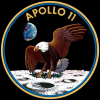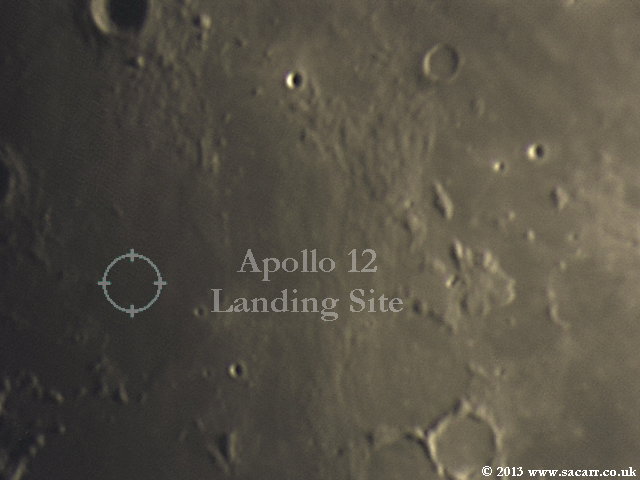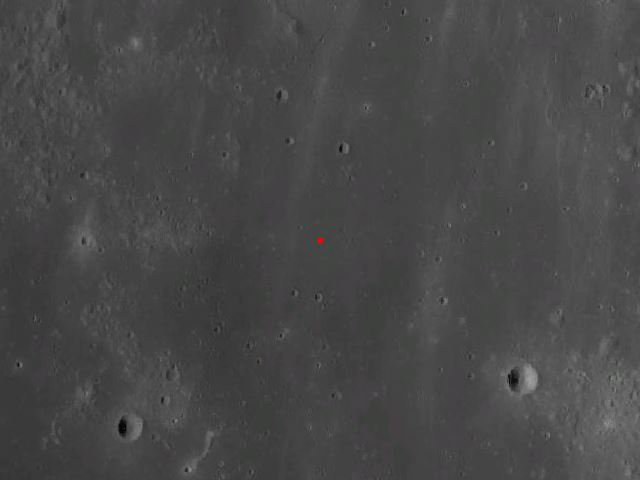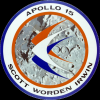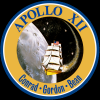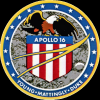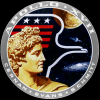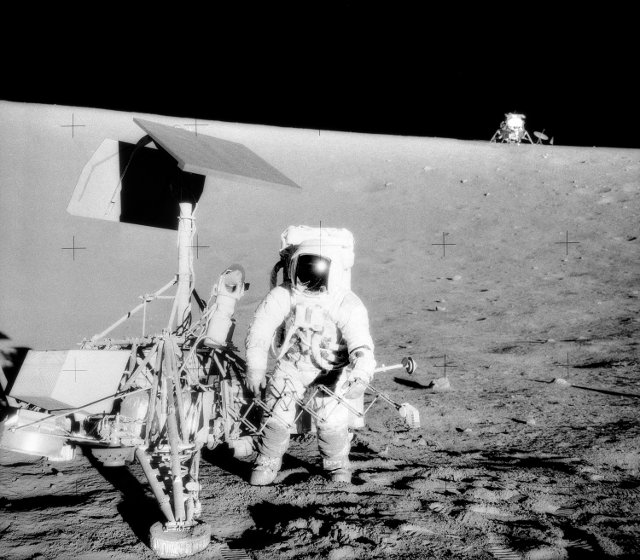Apollo 12
Apollo 12 was the sixth manned flight in the United States Apollo program and the second to land on the Moon (an H type mission). It was launched on November 14, 1969 from the Kennedy Space Center, Florida, four months after Apollo 11. Mission commander Charles "Pete" Conrad and Lunar Module Pilot Alan L. Bean performed just over one day and seven hours of lunar surface activity while Command Module Pilot Richard F. Gordon remained in lunar orbit. The landing site for the mission was located in the southeastern portion of the Ocean of Storms.
Unlike the first landing on Apollo 11, Conrad and Bean achieved a precise landing at their expected location, the site of the Surveyor 3 unmanned probe, which had landed on April 20, 1967. They carried the first color television camera to the lunar surface on an Apollo flight, but transmission was lost after Bean accidentally destroyed the camera by pointing it at the Sun. On one of two moonwalks, they visited the Surveyor, and removed some parts for return to Earth. The mission ended on November 24 with a successful
splashdown.
Apollo 12 launched on schedule from Kennedy Space Center, during a rainstorm. Thirty-six-and-a-half seconds after lift-off, the vehicle triggered a lightning discharge through itself and down to the earth through the Saturn's ionized plume. |
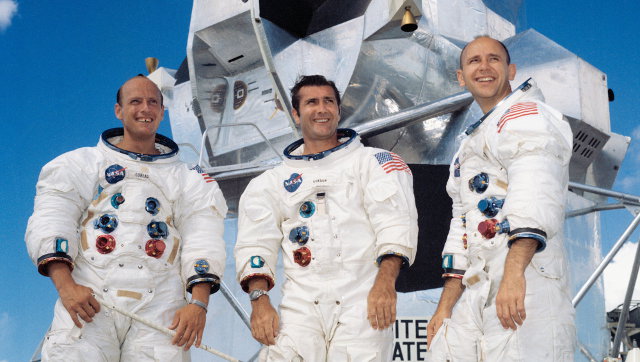
Charles Conrad,
Richard Gordon, Alan Bean
Picture credit
NASA |
Protective circuits on the fuel cells in the Service Module (SM) falsely detected overloads and took all three fuel cells offline, along with much of the Command/Service Module (CSM) instrumentation. A second strike at 52 seconds after launch knocked out the "8-ball" attitude indicator. The telemetry stream at Mission Control was garbled. However, the vehicle continued to fly correctly; the strikes had not affected the Saturn V Instrument Unit. |
The loss of all three fuel cells put the CSM entirely on batteries. They were unable to maintain normal 28V DC bus voltages into the heavy 75 amp launch loads. One of the AC inverters dropped offline. These power supply problems lit nearly every warning light on the control panel and caused much of the instrumentation to malfunction.
Legendary EECOM John Aaron remembered the telemetry failure pattern from an earlier test when a power supply malfunctioned in the CSM Signal Conditioning Equipment (SCE).
Aaron made a call, "Try SCE to aux." This switched the SCE to a backup power supply. The switch was fairly obscure and neither the Flight Director, CAPCOM, nor Commander Conrad immediately recognized it. Lunar Module Pilot Alan Bean, flying in the right seat as the CSM systems engineer, remembered the SCE switch from a training incident a year earlier when the same failure had been simulated.
Aaron's quick thinking and Bean's memory saved what could have been an aborted mission. Bean put the fuel cells back on line, and with telemetry restored, the launch continued successfully. Once in earth parking orbit, the crew carefully checked out their spacecraft before re-igniting the S-IVB third stage for trans-lunar injection. The lightning strikes had caused no serious permanent damage.
Text about the
missions via Wikipedia
Extreme close up
images via Virtual
Moon Atlas
|

